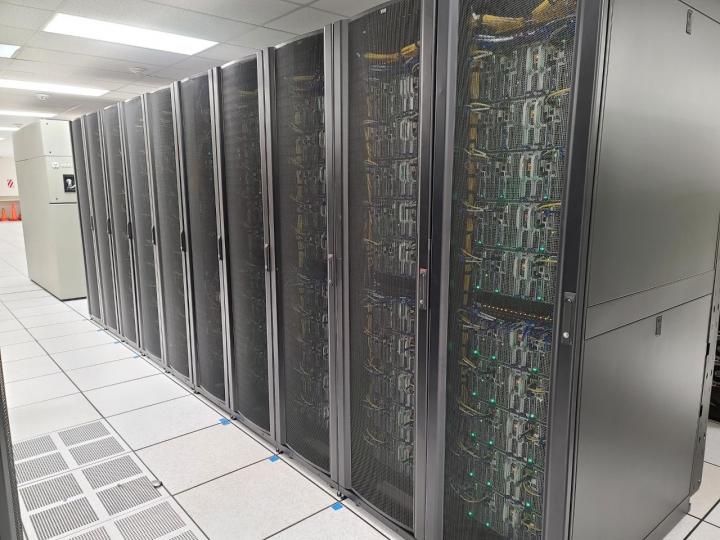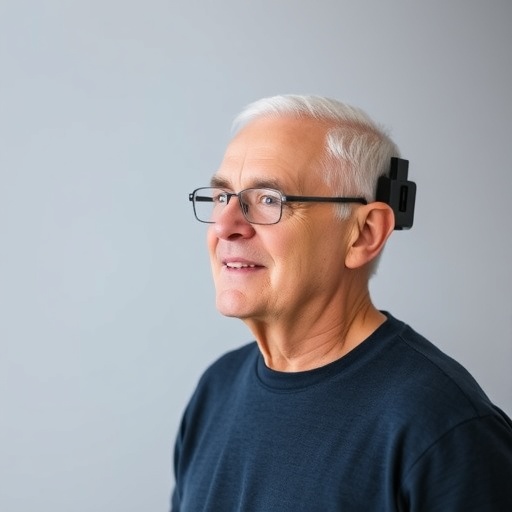TACC’s Stampede1 helps form core of campus cluster, increases access throughout Texas

Credit: UT Dallas
What happens to supercomputers after their productive life at an academic research center ends?
The question often arises when people hear that the average age of a top supercomputer at retirement is about five years. Rest assured — systems aren’t simply scrapped. Instead, they’re donated to organizations and institutions that can make use of their still-high-performance hardware.
A recent example is Stampede1, one of the most powerful supercomputers in the U.S. for open science research from 2013 to 2017. Stampede1 ran more than eight million jobs and delivered more than three billion core hours of computation to the national research community.
An Intel/Dell system that at one time was the 6th fastest in the world, Stampede1 was retired from the Texas Advanced Computing Center (TACC) at The University of Texas at Austin in 2017 and donated to a number of institutions. Among those was The University of Texas at Dallas (UT Dallas) — recently designated an “R1” research university — which sought to grow its advanced computing capacity and expertise.
Research computing resources had historically been almost non-existent on campus. In 2017, when Frank Feagans joined UT Dallas as Chief Information Officer, he started building a central cyberinfrastructure team and investing in core technologies. Then, in 2018, through the UT Research Cyberinfrastructure (UTRC) initiative — a program that provides advanced computing capabilities across all 14 University of Texas System institutions — UT Dallas received 20 Stampede1 racks.
These formed the compute backbone of Ganymede — a 4,786-core cluster that significantly augmented high performance computing (HPC) expertise at UT Dallas. Chris S. Simmons was hired as UT Dallas’ Director of Cyberinfrastructure Researcher Support in 2018. He had used supercomputers at UT Austin since 1997, “before TACC was TACC,” and in short order made Stampede1 useful for campus researchers again.
IF YOU BUILD IT…
In addition to building the system, Simmons led a public relations campaign to get researchers who were not previously using advanced computing in their research to do so.
“When I joined UT Dallas, the campus had a few dozen supercomputing users,” Simmons recalled. “As of January 1, 2020, we had 500 users on Ganymede and another 500 across other research group-specific systems.”
Ganymede helped users who might have been intimidated by TACC transition to larger-scale resources. “Once they’ve used Ganymede, nine times out of 10 they can copy their code to TACC and run without modification,” Simmons said. “They use Ganymede as a training tool and eventually a springboard to TACC or other national resources.”
The data supports this: UT Dallas is the second-largest consumer of cycles among the 14 institutions in the UT system and has more TACC users than any university in Texas besides UT Austin. In total, UT Dallas researchers used 30 million node hours in 2019.
Projects using Ganymede spanned efforts to teach data science to business students in the Naveen Jindal School of Management to research into seismic imaging.
Georgia Stuart, a Ph.D. student in Math studying geophysics, said it would take her desktop computer 1,000 days of computation to solve one problem.
“On Ganymede, I’m able to reduce the computation time to a mere 10 seconds per velocity field — or only 5 days of computation time — and I can run multiple parts of the experiment at once. Ganymede makes a hugely time-consuming problem, and my Ph.D. work, possible.”
BUILDING ON SUCCESS
Based on the widespread use of Ganymede, UT Dallas recently announced they are building a second system, Ganymede 2, an Intel based system that is still in early development. UT Dallas has committed to the new system and formed an advisory council to start making plans for long-term investment into research computing. UT System will contribute free power and cooling at the UT System/UTRC data center.
Ganymede 1’s Stampede racks will go into a “new” resource called Europa. Europa will be a high-throughput computing cluster with 12,800 cores that will provide web-based access to researchers and students from UT Dallas, UT Arlington and UT San Antonio.
“All three universities will have access to Europa and, longer-term, we plan to use Europa as a pipeline for TACC to retire systems that will then get re-inserted into the UT System research computing ecosystem,” Simmons said.
That’s not all. After seeing the impact of local HPC via Ganymede, Natural Sciences and Mathematica along with UT Dallas will be investing heavily into a Ganymede refresh that will bring GPGPU and machine learning/AI systems to campus.
“Before Ganymede and the Stampede1 donations, UT Dallas did not have HPC on our radar,” said Simmons. “Our approach was just to send everyone to TACC. By building Ganymede and showing a need on campus, we have built enough word-of-mouth and have made the case for more dedicated resources on campus.”
UT Dallas will hold its first research computing advisory committee meeting in August to develop a sustainable plan for UT Dallas research computing and establish goals for five and 10 years. “Without TACC and the legacy of Stampede1, that would not have been possible,” Simmons said.
SEEDING HPC LEADERS
Simmons’ vision for advancing computing excellence at UT Dallas, and improving the pipeline of computational scientists, goes further.
He recently received a $1.4 million grant from the National Science Foundation to develop a new post-doctoral program to train computational research facilitators — individuals who understand the needs of domain scientists and of top-tier HPC centers like TACC.
“There are not enough cyberinfrastructure professionals to fill the national need,” Simmons said. “TACC and other centers always have openings.”
The reason for this is simple. Research computing has not been around for long as a distinct discipline. Simmons counts himself among the first generation of PhD students to use HPC in their dissertations. Parallel computing, he notes, is still not taught as a formal discipline except in a handful of institutions.
Simmons hopes to identify HPC-savvy students in graduate school who do not want to go into academia and grab them before they join industry. His “Cyberteam” will hire three postdoctoral fellows from three domain areas: computational chemistry, computational biology, and data science/machine learning. These postdocs will be embedded into multiple research groups and will be part of a multi-campus effort to provide deeper levels of research facilitation and support. Instead of writing science papers, they will develop tutorial content for leading supercomputing conferences and contribute to open source science projects.
The effort is part of TRECIS, the Texas Research and Education Cyberinfrastructure Services cloud. Over the next three years, it aims to couple older, capacity resources from TACC with postdoctoral research facilitators and provide it as a service to all of UT system.
With additional TACC systems like Lonestar5 and Wrangler being decommissioned in the coming years, Simmons hopes to build up even greater capacity to enable and train computational scientists throughout the state.
“The goal is to develop the next generation of advanced cyberinfrastructure research facilitators for the nation, while addressing our short-term support needs on multiple campuses in key domain areas,” he said.
###
Media Contact
AARON DUBROW
[email protected]





